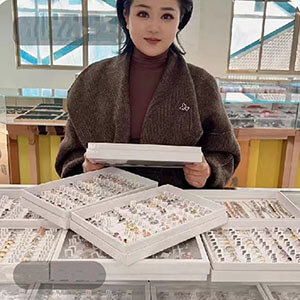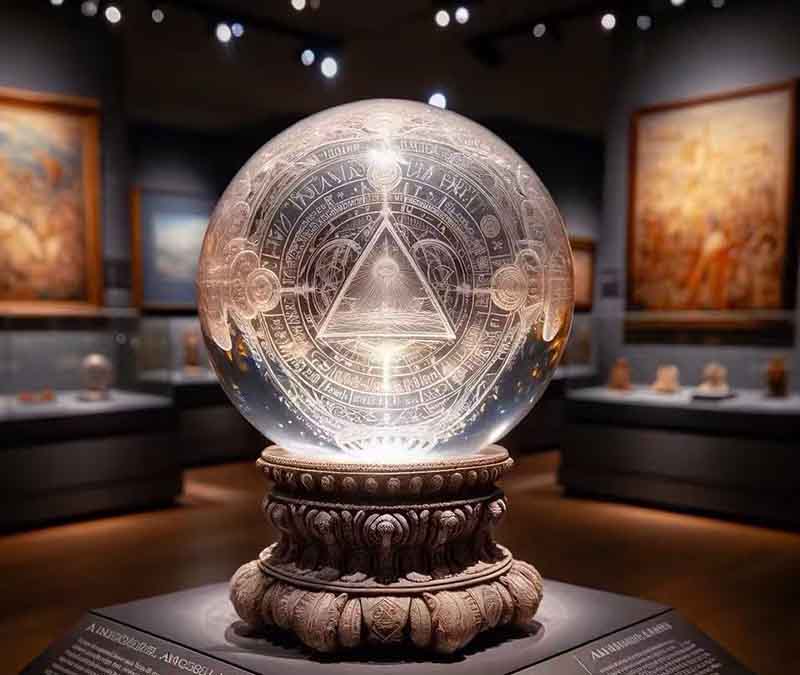Even conch beads, which are known for their rarity, can at least be seen in larger particles on top of fine jewelry.
But there are some gemstones that are extremely rare, so rare that you seldom see them on jewelry~
Blue Cone Ore:

The color of this gemstone is similar to the color of the California sky, Is called blue cone ore. It was designated as the state gemstone of California after it was discovered off the state coast in 1907.
Blue Cone Ore comes in blue, violet blue, light blue, colorless or white, and a small amount of pink.
Although it is not very hard, only 6 to 6.5 on the Mohs hardness scale, this gemstone surprisingly has a glassy ~ subadamantine luster.
Blue cone ore production is not only small, but also very small. Very few weigh more than 1 carat, so it is mostly used in collections.
It is possible to confuse it with sapphire in appearance, but it has a high dispersion value. In the right cut, it can give off a fire that sparkles like a diamond.
Despite several investigations, the cause of the blue conchite color is still unknown.


Tuffetite:
In the 1980’s there were only 3 known Taffy stones in circulation.
It was not until 2002 that more than 50 confirmed Taffy stones were in circulation. This number is arguably rarer than giant pandas in gem circles.

The first Taffyite discovered was only 1.4 carats. Because it looked so similar to spinel and because people didn’t recognize it at the time, it was placed in a box filled with Sri Lankan spinel.
In 1946, Count Richard Tuffy, an Austrian geologist, saw the box in an Irish jewelry store. And in the process of selecting the gems, he noticed that one was subtly different from spinel.
To further confirm what this gemstone was, Earl Tuffey sent it to the London Chamber of Commerce’s laboratory.
It was later sent to the Natural History Museum for testing. After analysis it was determined that it was an undiscovered gemstone. It was named Tuffyite after its discoverer, Earl Tuffy.
Taffy stone colors are colorless, green, blue, purple, and fuchsia. When chromium is present, it appears pink or red.


Taffy’s hardness is similar to spinel’s, which is 8-9 on the Mohs hardness scale and has a bright glassy luster. Because tafetite is so rare, it attracts attention whenever it shows up on the market.
In 1999, a 13.5-carat Taffy stone was sold at auction, the largest known Taffy stone.
The Taffy stone in the collection of the Geological Museum in London, England, weighs just 0.86 carats.
Only Sri Lanka currently produces good quality taffyite crystals, and a Sri Lankan collector owns the only 10.33 carat all-clear lavender oval taffyite.


Although taffy is found in Australia, Burma, Russia, and China, crystals are lower quality.
Although once mistaken for spinel, high quality taffyite has earned itself a impressive price for its extremely rare production.
It can cost as much as $35,000 per carat.

Blue Square Stone:
Take a look at the stunning color, which is almost made with highly saturated pigments. How partial is nature to producing a gemstone with such an intense blue color?
Discovered in 1807 on Mount Soma in Italy, this gemstone was named Haüyne after René Just Haüy, the French crystallographer who discovered it.
Sapphire is a rare gemstone species in the Calcite family of minerals. It is composed mainly of sulfate-containing sodium, calcium, and aluminum silicate minerals.
And is formed mainly from alkaline volcanic rocks. With a hardness of only 5.5 to 6 on the Mohs scale, it is one of the more fragile and vulnerable gemstones.

But don’t worry, it is produced in very small quantities, so small that there is little chance of bumping.
Although it is found in Germany, France, Italy, Morocco, Spain, the United States and Canada, the clear, gem-quality blue sapphire single crystal is only found in Germany’s Eifel Mountains.
Moreover, it is usually very small and cut into facets. It is not easy for a faceted product to reach 0.1 carat, and it is very rare to reach 1 carat.
Phlogopite:

This gemstone, with a hardness of only 3 to 3.5 on the Mohs scale, is highly prized by mineral specimen collectors and gemstone collectors. It is valued for its distinctive and delicate blue-green color.
It is so rare that collectors call it the “Holy Grail of minerals”.
Phosphorite is a rare zinc phosphate mineral found in only a few places. The only gem-quality crystals come from a single gemstone mine in Bolivia.
Although Phosphorite crystals have been found in Germany and the United States, they are too small and pale in color.
This is coupled with the fact that this gemstone is so completely disintegrated that it cannot be cut into facets.
Because it is so rare, usually the better color and clarity phosphorites are collected.
Only broken crystals and fragments are spared cutting into facets. As a result, faceted phosphorites, set in jewelry, are usually small and expensive.


Red beryl:
Beryls are truly a crowded and competitive family, no matter which color is put into the gem circle. They are very beatable. Green emerald, blue aquamarine, pink morganite, and the so expensive it makes you cry, red beryl.


Red beryl has about 20 times the amount of manganese as morganite. It is dark pink to dark light brown, rose red and reddish brown in color.
It is most mesmerizing when its color is a saturated red with a hint of deep blue.
Emeralds, aquamarines, morganites and other beryl siblings have their own exclusive names.

In comparison, red beryl doesn’t sound expensive. It actually has a name, bixbite, from the man who discovered it, the brilliant, self-taught geologist Maynard Bixby.
So why hasn’t the name stuck? Because the name bixbyite, the name of another galena type discovered earlier, is too similar to it.
So people to avoid confusion, coupled with the principle of first-come-first-served, prefer to use the red beryl to call it. Over time, the name of the big name is rarely called ~~.
How rare is red beryl?
About 0.5 carats of faceted red beryl can be produced per ton of gemstone ore. Single stones weigh less than 0.5 carats. So if a 2 to 3 carat red beryl occurs, it can be called a massive stone.
This also leads to a very serious carat premium for red beryl, with 2 carats costing 5 to 7 times more than 1 carat.
Expensive, is probably the biggest drawback of this gemstone. When cut, red beryl can cost up to $10,000 per carat.


Silicon Boron Magnesia Aluminum Ore:
This gemstone, which has a lime green to greenish-blue color, is called silica-boron magnesium-aluminum ore.

It is an extremely rare gemstone that was first discovered in Madagascar in 1902 and named after French naturalist Alfred Grandidier.
It has a Mohs hardness of 7.5 and a blue-green color similar to Paraiba tourmaline.
The amount of iron in the mineral affects its blueness. Although beautiful and of good hardness, it is too rare. And most crystals have a lot of internal cleavage and impurities, so transparency is poor, and clean, fully transparent ones are really few and far between.
White Lead Ore:
White lead ore, which occurs chiefly in oxidized zones of lead-zinc or lead-bearing deposits.

As the lead is sometimes partially replaced by silver or chromium, it assumes a white or light yellow or brown color, with an adamantine luster.
The dispersion value of this ore is so high that, when cut and ground into facets, it shines more than a diamond.
However, it has a very low hardness of 3-3.5 on the Mohs scale. This simply means that it is beautiful and fragile, and can be easily scratched.
However, due to its rarity, there is little chance of scratching.
In addition to these rare gemstones, nature also nurtures a variety of beautiful gemstones. However, due to excessive rarity and space limitations, today they will not be introduced one by one!












